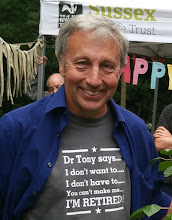The idea of “biodiversity
offsetting” was discussed before the last election and has now ended up as a
major element of the Natural Environment White Paper. This was a good idea in concept – if marginal
damage to wildlife in one area is more than compensated for by gain (a
biodiversity offset) in another then a level of acceptable development might be
possible whilst at the same time delivering overall wildlife gain, everybody
wins.
The dangers to this approach
are obvious. Habitats are often
irreplaceable, they can’t simply be patched-up somewhere else; it could be open
to abuse, so losses are not replaced by gains and there could be endless
arguments over where, when and how much habitat can or can’t be constructed. Furthermore, people in one area will not be
too pleased if their environment is devastated on the basis that another
community a long way away might be seeing some wildlife improvement. There also might be in-principle concerns
about the comodification of nature – the whole idea of trading nature may
simply be wrong.
Nevertheless these problems
are all well-known and DEFRA have been investigating ways of ensuring that a
system is not miss-used. Offsetting
should not turn an unacceptable development into an acceptable one;
irreplaceable habitats should not be lost in the hope that a poor copy might be
built somewhere else, and this should not just become a licence to trash.
All this, however, appears to
have been swept aside in Owen Paterson’s recent interview in The Times
(subscription). Ancient woodlands are
some of our most cherished, irreplaceable habitats. They are at least 400 years old; indeed many
may date back to the Ice Age. They are
living ancient monuments, stores of historical information and homes to plants
and animals that simply don’t turn up if you plant a copy somewhere else. Yet Mr Paterson considers that all this can
be ignored if you plant enough new trees in compensation. Serried ranks of recently planted trees are
no replacement for a place that could have hundreds of years of history. The purpose of biodiversity offsetting is
explicitly to achieve net conservation gain; Owen Paterson, however, seems to
be using it simply as a method of unlocking destructive development.
I have been cautiously
supportive of the idea of biodiversity offsetting for a long time. It really could bring significant funds into
nature conservation and deliver some serious wildlife gain if deployed
correctly. Mr Paterson’s approach,
however, does make me wonder whether the idea is now discredited and whether
George Monbiot is correct in his criticisms – is this really just a licence to
trash?

No comments:
Post a Comment